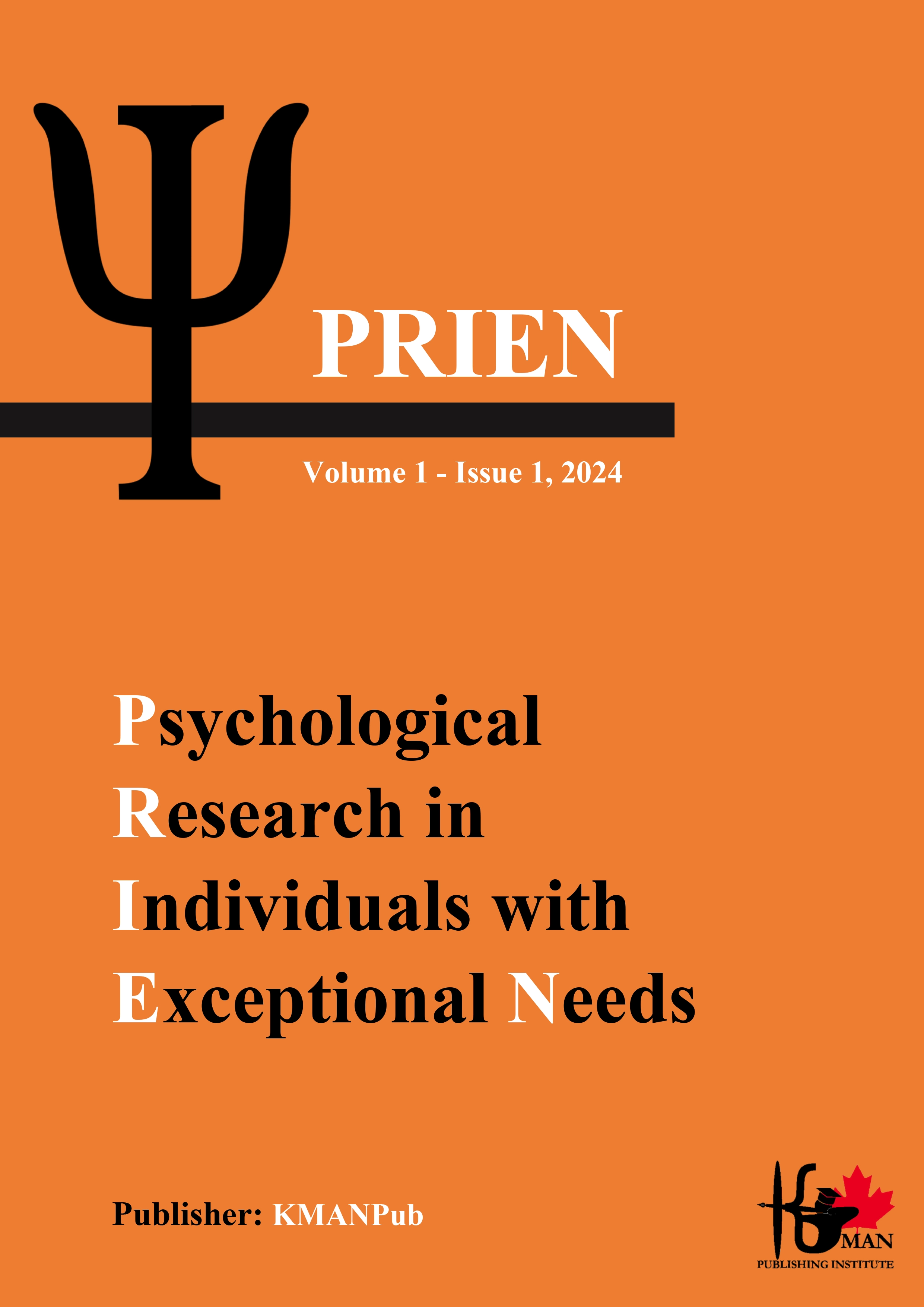Therapists' Experiences with Nonverbal Communication Techniques in Psychotherapy for Children with Autism
Keywords:
Autism, Nonverbal Communication, Psychotherapy, Therapists’ Experiences, Behavioral Improvements, Emotional ConnectionAbstract
This study aims to explore therapists' experiences with nonverbal communication techniques in psychotherapy for children with autism. This qualitative study employed a phenomenological approach to gain in-depth insights into therapists' experiences. Sixteen licensed therapists with at least two years of experience working with children with autism were selected through purposive sampling. Data were collected through semi-structured interviews, each lasting 60-90 minutes, and were transcribed verbatim for analysis. Thematic analysis was conducted to identify key themes and patterns in the data. NVivo software was used to facilitate the organization and analysis of qualitative data, ensuring rigor through triangulation, member checking, and maintaining an audit trail. The analysis revealed four main themes: implementation of nonverbal techniques, perceived effectiveness, challenges and barriers, and strategies for overcoming barriers. Therapists reported using a variety of nonverbal techniques such as gestures, facial expressions, eye contact, body language, and physical proximity. These techniques were perceived as highly effective in enhancing understanding, emotional connection, behavioral improvements, and self-expression in children with autism. However, challenges such as therapist-child compatibility, resource limitations, environmental factors, and inconsistent parental involvement were noted. Strategies to overcome these challenges included continuous training, collaborative approaches, adaptive techniques, creating supportive environments, and leveraging technology. Nonverbal communication techniques are essential in psychotherapy for children with autism, significantly enhancing therapeutic outcomes. Despite challenges, these techniques, when tailored to individual needs and supported by continuous training and collaboration, can greatly benefit children with autism. Future research should focus on larger and more diverse samples, quantitative measures of effectiveness, and the role of cultural sensitivity in nonverbal communication strategies.
Downloads
References
Asadalah Salmanpour, F., & Pasha, G. (2023). The effect of acceptance and acceptance therapy (ACT) on happiness, mental health and quality of life of mothers with autistic children. Psychology of Woman Journal, 4(1), 81-89.https://doi.org/10.61838/kman.pwj.4.1.9
Chiang, C. M., Soong, W. T., Lin, T. L., & Rogers, S. J. (2008). Nonverbal Communication Skills in Young Children With Autism. Journal of Autism and Developmental Disorders, 38(10), 1898-1906.https://doi.org/10.1007/s10803-008-0586-2
Hyde, K. L., Samson, F., Evans, A. C., & Mottron, L. (2010). Neuroanatomical Differences in Brain Areas Implicated in Perceptual and Other Core Features of Autism Revealed by Cortical Thickness Analysis and Voxel‐based Morphometry. Human Brain Mapping, 31(4), 556-566.https://doi.org/10.1002/hbm.20887
Imani, Z., Zanganeh Motlagh, F., & Abbasi, M. (2022). Marital Disturbance and Object Relations in Mothers of Children with an Autism Spectrum Disorder (ASD): The Mediating Role of Psychological Coherence. Journal of Adolescent and Youth Psychological Studies (JAYPS), 3(1), 111-122.https://doi.org/10.61838/kman.jayps.3.1.9
Kahaki, F. (2024). The Effectiveness of Social-Cognitive Competence Skills Training on Positive Affects and Executive Functions of Adolescents. Journal of Psychological Dynamics in Mood Disorders (PDMD), 3(1), 222 233.https://doi.org/10.22034/pdmd.2024.449900.1067
Karna, W., & Stefaniuk, I. (2024). The Influence of Peer Relationships on the Social Development of Children with Autism Spectrum Disorder. Iranian Journal of Neurodevelopmental Disorders, 2(4), 10-18.https://doi.org/10.61838/kman.jndd.2.4.2
Knapik-Szweda, S. (2020). The Effectiveness and Influence of Vocal and Instrumental Improvisation in Music Therapy on Children Diagnosed With Autism. Pilot Study. Journal of Education Culture and Society, 6(1), 153-166.https://doi.org/10.15503/jecs20151.153.166
Maljaars, J., Noens, I., Jansen, R., Scholte, E., & Berckelaer-Onnes, I. v. (2011). Intentional Communication in Nonverbal and Verbal Low-Functioning Children With Autism. Journal of Communication Disorders, 44(6), 601-614.https://doi.org/10.1016/j.jcomdis.2011.07.004
Nowak, D., PrÓChnicka, M., Siwek, M., Giermasiński, A., Tuszyńska, W., Zarzycki, A., & Komisarczuk, M. (2023). Therapeutic Strategy in the Form of Communication in the Children With the Autism Spectrum Disorders - Narrative Review. Journal of Education Health and Sport, 17(1), 64-69.https://doi.org/10.12775/jehs.2023.17.01.008
Raharjo, F., Ridwan, R., Harianto, D., Jailani, S., Ulfah, S. M., & Sari, F. (2022). Nonverbal Communication Behavior of Autistic Children in the Therapy Process at the Center Jambi Province Autism Service.https://doi.org/10.4108/eai.20-10-2021.2316436
Silverman, M. J. (2008). Nonverbal Communication, Music Therapy, and Autism: A Review of Literature and Case Example. Journal of Creativity in Mental Health, 3(1), 3-19.https://doi.org/10.1080/15401380801995068
Wan, C. Y., Demaine, K., Zipse, L., Norton, A., & Schlaug, G. (2010). From Music Making to Speaking: Engaging the Mirror Neuron System in Autism. Brain Research Bulletin, 82(3-4), 161-168.https://doi.org/10.1016/j.brainresbull.2010.04.010
Yoder, P. J., & McDuffie, A. (2006). Teaching Young Children With Autism to Talk. Seminars in Speech and Language, 27(3), 161-172.https://doi.org/10.1055/s-2006-948227
Downloads
Additional Files
Published
Issue
Section
License

This work is licensed under a Creative Commons Attribution-NonCommercial 4.0 International License.
















